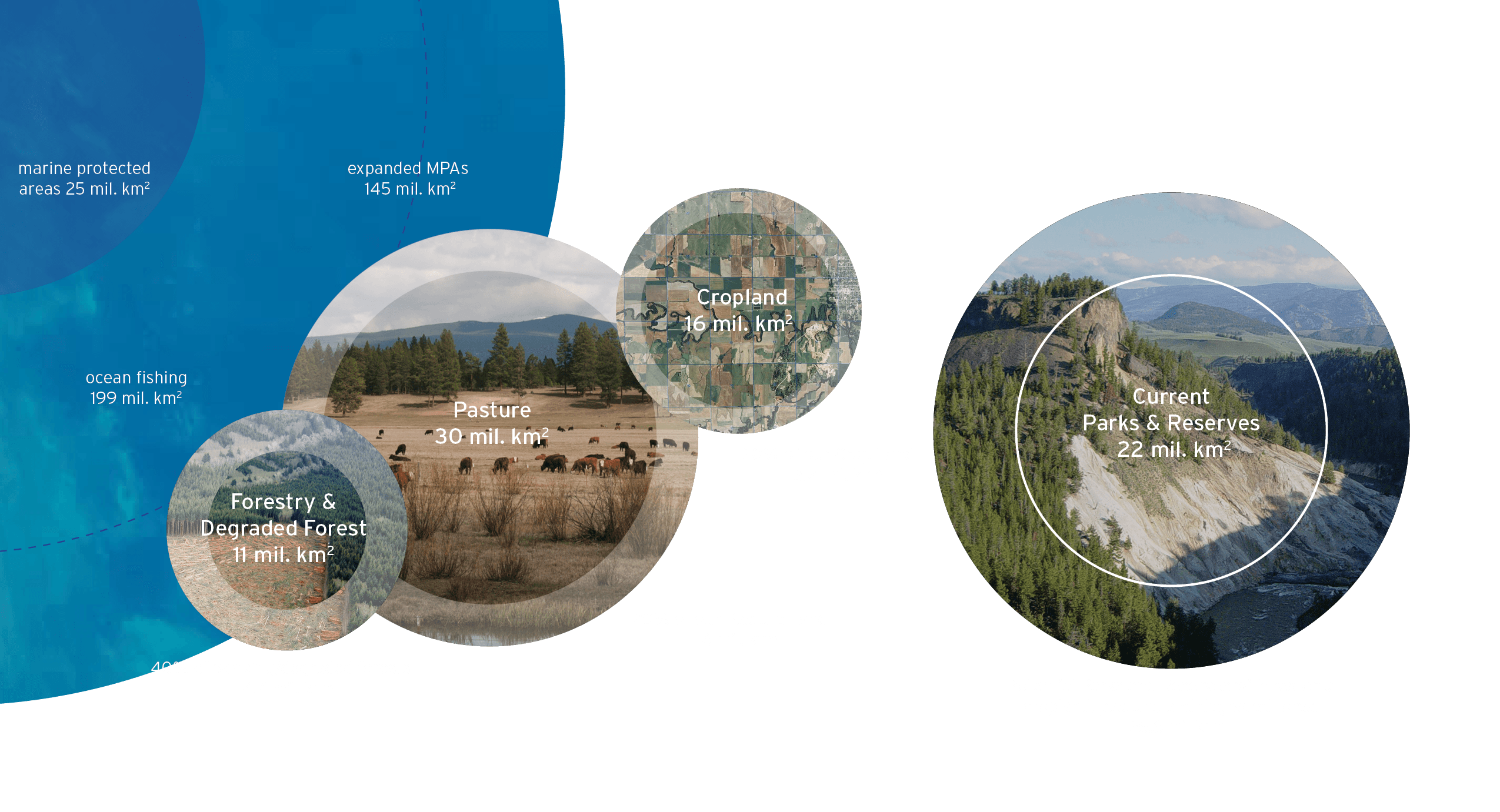Restore degraded lands

OVER 30% OF AGRICULTURAL LANDS HAVE BEEN DEGRADED OR ABANDONED.
By wasting less food, shifting our diet, and improving yields we could reduce agricultural pressures and restore degraded lands to native forests, grasslands, and wetlands - absorb 10% of annual greenhouse gas emissions and prevent 60% of expected extinctions.
Map Source: Soil Erosion, World Atlas of Desertification. European Commission. | Emissions reductions and offsets potential based on estimates from Project Drawdown, World Resources Institute, Rodale Institute, The Nature Conservancy, and Strassburg et al. Global priority areas for ecosystem restoration. Nature. (2020).
WHAT IF WE COULD GIVE LAND BACK TO NATURE?

By improving our agricultural and grazing practices, and by sustainably fishing and farming the ocean, we could feed more people, reduce carbon emissions, give land back to nature, and increase our parks and reserves by over 50%.
Source: Eric Sanderson, “The Human Footprint”
Potential Restoration Areas Worldwide

"Degradation of the Earth’s land surface through human activities is negatively impacting the well-being of at least 3.2 billion people, pushing the planet towards a sixth mass species extinction...
[Avoiding, reducing, and reversing] land degradation can increase food and water security, can contribute substantially to the adaptation and mitigation of climate change and could contribute to the avoidance of conflict and migration."
Sources: Strassburg et al. Global priority areas for ecosystem restoration. Nature. (2020). map is a composite illustration highlighting converted grassland and forest areas which are partially available for restoration after closing yield gaps in agricultural lands. all wetland areas are shown. sources include. Strassburg et al. Global Priority Areas for Ecosystem Restoration. Nature. (2020); Atlas of Forest Landscape Restoration Opportunities. World Resource Institute (2014). | quote: Intergovernmental Science-Policy Platform on Biodiversity and Ecosystem Services (IPBES) 2018. The assessment report on land degradation and restoration.
Next solution



Learn about Maya Lin’s fifth and final memorial: a multi-platform science based artwork that presents an ecological history of our world - past, present, and future.

Discover ecological histories and stories of former abundance, loss, and recovery on the map of memory.

Learn how we can reduce our emissions and protect and restore species and habitats – around the world.

See how art can help us rethink the problems we face, and give us hope that each one of us can make a difference.

Help make a global memorial something personal and close to home. Share your stories of the natural world.